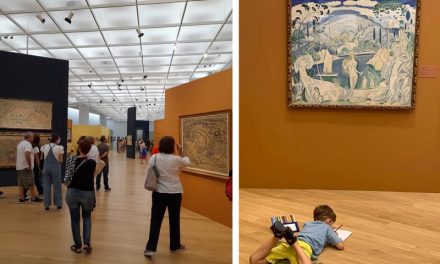Ancient Greek civilization constitutes one of the cornerstones of western civilization and modern Greece has inherited a vast cultural heritage, preserved in more than 150 archeological museums and collections around the country, the vast majority of which are state-run and harbour works and collections of incalculable historical significance.
Since 1997, the John S. Latsis Public Benefit Foundation has been supporting the documentation of this immense historical and artistic treasure with its publishing programme “The Museums Cycle”, to highlight the cultural heritage of Greece. A volume dedicated to an archaeological museum, monument or other archaeological site of the country has been published almost each year since then, with the aim of creating a series of albums which, with their scientific validity and their aesthetic approach, would contribute to the deeper understanding of the history of Greek civilization. The series provides specialized scientific knowledge enriched with the necessary material, tables, pictures and drawings, as well as an attractive visualization of antiquity, both for the known and for the unfamiliar dimensions of the monuments of our cultural heritage, with an unrivaled aesthetic. Moreover, the same publishing effort has given to a number of fellow archaeologists the opportunity to present and document their work, through which they can promote their own contribution to science.
These luxury publications are not for sale; they are printed in a limited number of copies, in Greek and English, and are distributed free to selected recipients, namely universities, libraries, museums, archaeological services and schools, institutions and other cultural and research organizations in Greece and abroad. At the same time, they are accessible to the public as e-books for reading or for use as educational tools at schools or universities.
For a virtual tour with in depth information regarding some of Greece’s best Archaeological Museums, just click on the titles below:
The latest and 17th consecutive volume of “The Museums’ Cycle”, features the archaeological site and the museum of Mycenae. It offers a comprehensive narrative of the history of the place that gave birth to the great Mycenaean civilization, which dominated the eastern Mediterranean region between the fifteenth and twelfth centuries and played an essential role in the development of the culture of classical Greece. ‘Rich in Gold’, the kingdom of mythical Agamemnon, first sung by Homer in his epics, is the most important and richest palatial centre of the Late Bronze Age in Greece. The Acropolis of Mycenae, with its Great Cyclopean walls, was inscribed in 1991 in UNESCO’s list of World Heritage Monuments.
One of the most important and least visited of archaeological sites in downtown Athens is Kerameikos. This was actually the cemetery of ancient Athens and was continuously in use from the 9th century BC until the Roman times. The area took its name from “keramos”, which means pottery in Greek, from the numerous pottery workshops that existed in the area before it was turned into a cemetery. This perennial and vibrant archaeological site, besides containing the cemetery of ancient Athens, was also the starting point of the Panathenaic procession.
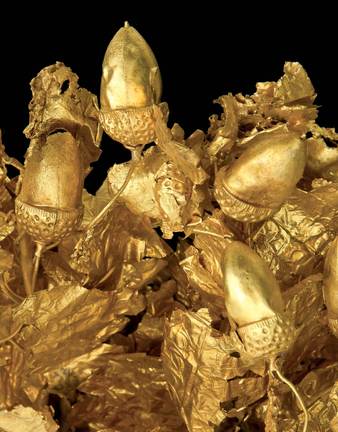 AIGAI: THE ROYAL METROPOLIS OF THE MACEDONIANS (Vol. XV, 2013)
AIGAI: THE ROYAL METROPOLIS OF THE MACEDONIANS (Vol. XV, 2013)
The excavation by Professor Manolis Andronikos and his associates under the Great Tumulus of Vergina village in Central Macedonia in 1977 brought to light one of the most important archaeological discoveries of the 20th century in Greece. The site of the Royal Tombs in the first capital of the ancient kingdom of Macedonia, called Aigai. In this unique discovery of universal significance, inscribed in UNESCO’s world heritage lists since 1996, the most important remains are the monumental palace, lavishly decorated with mosaics and painted stuccoes, and the burial ground with more than 300 tumuli, some of which date from the 11th century B.C. One of the royal tombs in the Great Tumulus is identified as that of the Macedonian king Philip II, father of Alexander the Great, who paved the way for the expansion of the Hellenistic world.
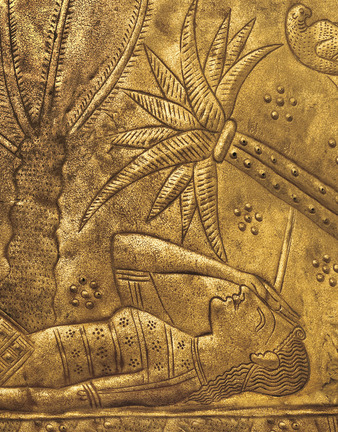 SAMOS: THE ARCHAEOLOGICAL MUSEUMS (Vol. XIV, 2012)
SAMOS: THE ARCHAEOLOGICAL MUSEUMS (Vol. XIV, 2012)
Samos is an island with a long history and rich culture, known as the birthplace of the great philosopher and mathematician Pythagoras. Since ancient times, it was famous for the Sanctuary of Hera, the ‘Heraion’, the ancient fortified port Pythagoreion, and the engineering masterpiece “The tunnel Eupalinos” – all of which have been protected as world heritage monuments by UNESCO since 1992. Most findings from the Sanctuary of Heraion are hosted in the Archaeological Museum of Pythagorion that was inaugurated in May 2010. Another interesting archaeological museum with findings from excavations around the island is found in Vathy, the capital of Samos.
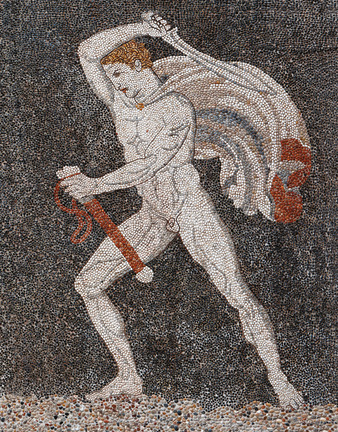 THE ARCHAEOLOGICAL MUSEUM OF PELLA (Vol. XIII, 2011)
THE ARCHAEOLOGICAL MUSEUM OF PELLA (Vol. XIII, 2011)
Pella was the ancient capital of Macedonia and the birthplace of Macedonian civilization. The new museum near the archaeological site of the ancient city and the Macedonian palace opened in 2009, aiming to give a complete picture of the civilization in Archaic and early Classical times, a time when the Macedonians were beginning to establish their kingdom. It hosts a variety of significant archaeological findings that testify to the identity of the inhabitants of Macedonia, its origins and Greek languages, the gods they worshiped, education and culture.
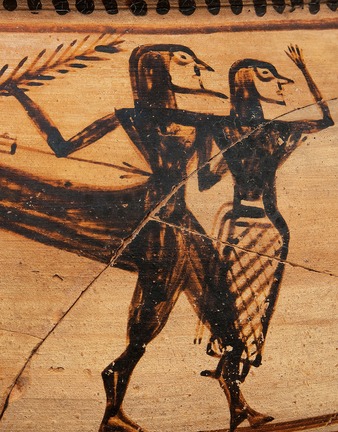 ΤHE ARCHAEOLOGICAL MUSEUM OF THEBES (Vol. XII, 2010)
ΤHE ARCHAEOLOGICAL MUSEUM OF THEBES (Vol. XII, 2010)
The Thebes Archaeological Museum is a lesser known but equally important museum that houses rare and even unique collections from Greek and foreign excavations in Boiotia, central Greece, and covers the region’s civilization from the Paleolithic to the Post-Byzantine periods that played a major role in the development of the miracle of ancient Greek culture. Some of its collections are especially interesting because they are unique; for example the Near Eastern Bronze Age cylinder seals from the Theban palace in the Kadmeion, the Mycenaean larnakes from Tanagra, the Archaic kouroi from Ptoon etc.
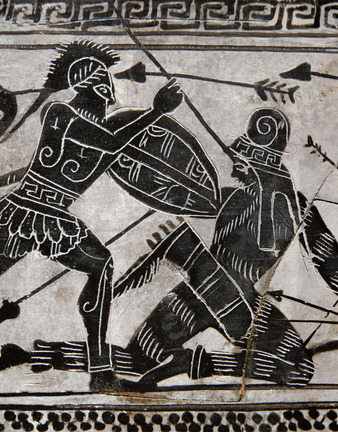 MARATHON AND THE ARCHAEOLOGICAL MUSEUM (Vol. XI, 2009)
MARATHON AND THE ARCHAEOLOGICAL MUSEUM (Vol. XI, 2009)
This 2009 volume on Marathon and its Archaeological Museum celebrated the 2500 years from the homonymous historic battle, when the outnumbered Athenians defeated the Persian army led by king Darius in 490 BCE in the first Persian invasion, and set the stage for a century of splendour and Greek innovation in politics, philosophy, art, theatre, and culture. The Marathon valley is intimately linked to the history of the battle, whose mythic dimensions are further highlighted by the simplicity of the pieces that testify to the daily life at the time. The museum collections come directly from excavations in the surrounding area and include items from the Neolithic period to the late Roman era, the most famous being from the Tomb of the Athenians and the prehistoric burial grounds.
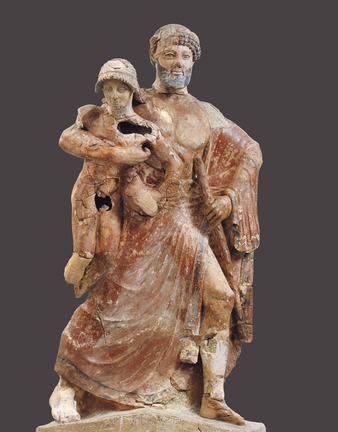 THE ARCHAEOLOGICAL MUSEUM OF OLYMPIA (Vol. X, 2008)
THE ARCHAEOLOGICAL MUSEUM OF OLYMPIA (Vol. X, 2008)
The Archaeological Museum of Olympia, one of the most important museums in Greece, presents the long history of the most celebrated sanctuary of antiquity, the sanctuary of Zeus, father of both gods and men, where the Olympic Games were born in 776 BC. Renowned for its sculptures and for its outstanding collection of ancient Greek bronzes, the richest of its kind in the world, the museum holds some of the best examples of ancient Greek Classical and Late Classical Greek art, including the sculptural decoration of the temple of Zeus that is one of the seven wonders of the ancient world, the Nike of Paionios, the famous Hermes of Praxiteles, a large terracotta collection and many more unique exhibits. The sacred site of Ancient Olympia was inscribed in UNESCO’s list of World Heritage in 1991.
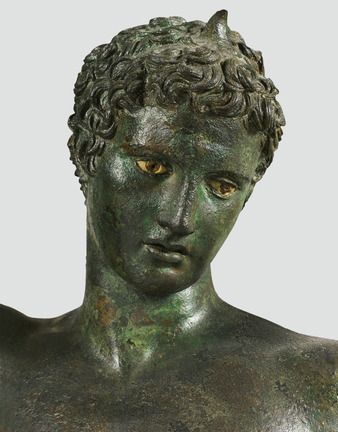 THE NATIONAL ARCHAEOLOGICAL MUSEUM (Vol. IX, 2007)
THE NATIONAL ARCHAEOLOGICAL MUSEUM (Vol. IX, 2007)
Athens’ renovatedNational Archaeological Museum is the largest museum in Greece and one of the most remarkable archeological museums in the world, housed in an imposing 19th century neoclassical building, designed by Ludwig Lange and remodeled by Ernst Ziller. With a rich collection of more than 11,000 artifacts found in all parts of the Greek world, it offers visitors a broad overview of ancient Greek civilization from the beginnings of Prehistory to Late Antiquity. The vast exhibition space houses five large permanent collections: The Collection of Prehistoric Antiquities, from the great civilizations in the Aegean (Neolithic Collection, Cycladic Collection, Mycenaean Collection, Thira Exhibition); the Sculptures Collection, with unique masterpieces of ancient Greek sculpture from the 7th to 5th centuries BC; the Vase and Minor Objects Collection, with representative works of ancient Greek pottery from the 11th century BC to the Roman period; the Bronze Collection, with many fundamental statues, figurines and minor objects; and, finally, the only Egyptian and Near Eastern Antiquities Collection in Greece, with works dating from the pre-dynastic period (5000 BC) to the Roman conquest.
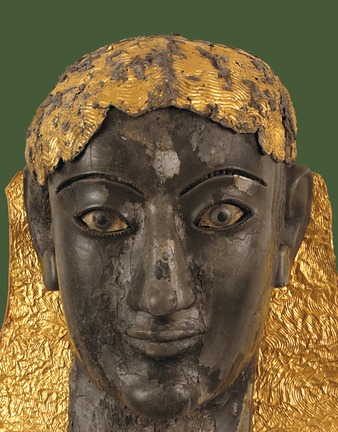 THE ARCHAEOLOGICAL MUSEUM OF DELPHI (Vol. VII, 2006)
THE ARCHAEOLOGICAL MUSEUM OF DELPHI (Vol. VII, 2006)
In an impressive location on the slopes of Mount Parnassos, the pan-Hellenic sanctuary of Delphi, where the famous oracle of Apollo spoke, was the largest religious centre of the Greek world and the site of the ‘omphalos’, the ‘navel of the world’. Besides Delphi’s outstanding architectural monuments and settings, the museum is one of the most significant in Greece with rich collections of valuable sculptures and statues, donated to the sanctuary from its early years in the 8th century BC to its decline in Late Antiquity, including the famous Charioteer, the sacred symbol of Delphi, the ‘omphalos’ (navel), the statues of Kleobis and Biton, the Sphinx of the Naxians, etc. The archaeological site of Delphi was included in the UNESCO list of World Heritage Monuments in 1986.
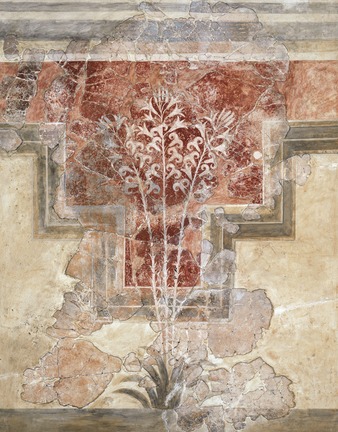 THE ARCHAEOLOGICAL MUSEUM OF HERAKLEION (Vol. VII, 2005)
THE ARCHAEOLOGICAL MUSEUM OF HERAKLEION (Vol. VII, 2005)
Considered as one of the most significant museums in Europe and the museum of the Minoan Cutlure par excellence worldwide, the Archaeological Museum of Herakleion owes its fame and popularity to an impressive collection of Minoan antiquities from excavations in Knossos, Pheastos, Gortyn, Aharnes, Matala etc, with unique treasures like the famous Phaistos Disk (Phaistos), the Goddess of Snakes, and fragments of the original frescoes from the fabulous Palace of Knossos. The museum brings together archaeological finds from all over Crete, covering a time span of over 5,500 years of the island’s history, from the Neolithic period to the Roman times.
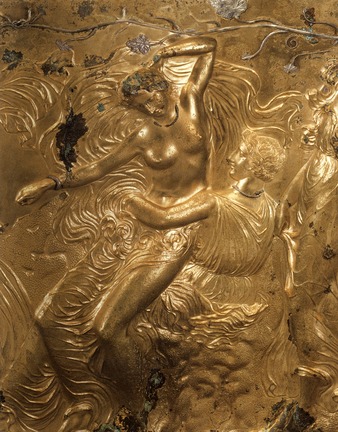 THE ARCHAEOLOGICAL MUSEUM OF THESSALONIKI (Vol. VI, 2004)
THE ARCHAEOLOGICAL MUSEUM OF THESSALONIKI (Vol. VI, 2004)
The Archaeological Museum of Thessaloniki is one of the most important in Greece. Renovated in 2003, the museum features distinctive works of art and excavation finds from the city of Thessaloniki and the wider area of the region of Macedonia, that encompass all aspects of personal and public life in antiquity: from the first organized settlements of the Neolithic period to the works made of metal, gold, glass and ceramics and from the precious funerary offerings of the Macedonian tombs to the outstanding sculptures and archaeological relics of the Archaic, Classical, Hellenistic and Roman periods.
This small, rocky island in the Cyclades archipelago in the centre of the Aegean Sea was one of the most sacred places of ancient Greece, and one of the most robust trade centres as well. According to Greek mythology, Delos was the birthplace of Apollo and his sanctuary attracted pilgrims from all over the Greek world. The island was also a prosperous trading port and bears traces of the succeeding civilizations in the Aegean, from the 3rd millennium B.C. to Early Christianity. The entire island, a UNESCO’s world heritage monument since 1990, is an exceptionally extensive and rich archaeological site that conveys the image of a great cosmopolitan Mediterranean port of the ancient world.
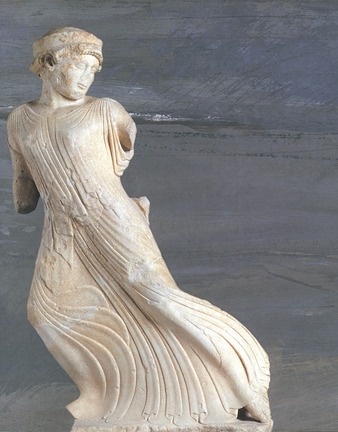 ELEFSIS: THE ARCHAEOLOGICAL SITE AND THE MUSEUM (Vol. IV, 2002)
ELEFSIS: THE ARCHAEOLOGICAL SITE AND THE MUSEUM (Vol. IV, 2002)
Elefsis, one of the most sacred centres of the ancient world worshiping Demeter and Persephone, is one of the most interesting archaeological sites in Greece, not only on account of its size or state of preservation, but also because of its mystical character. The sanctuary was home to the legendary cult of Demeter, where the most famous of the secret religious rites of ancient Greece, known as “Eleusinian Mysteries”, were celebrated annually. In the 8th century B.C. the sanctuary acquired a Pan-Hellenic character and the “Eleusinian Mysteries” were established as one of the most important Athenian festivals, with splendid buildings erected during the Classical and Roman periods.
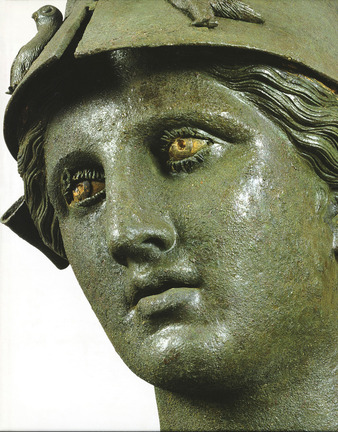 THE ARCHAEOLOGICAL MUSEUM OF PIRAEUS (Vol. III, 2001)
THE ARCHAEOLOGICAL MUSEUM OF PIRAEUS (Vol. III, 2001)
The museum of Piraeus features a representative and complete picture of the history of this ancient port, which flourished as the naval dockyard of ancient Athens and as a commercial centre of the Eastern Mediterranean. The variety and excellent quality of the exhibits uncovered from archaeological research in the wider area of the city, the western coast of Attica and the Argosaronikos islands, from the Mycenaean times to the Roman era, introduce us to the life of a city that embodied the principles and values of classical Greece. Some of the exhibits are extremely rare, in particular the famous bronze statues, the impressive monument of Kallithea, the figurines from Mycenaean and Minoan sanctuaries.
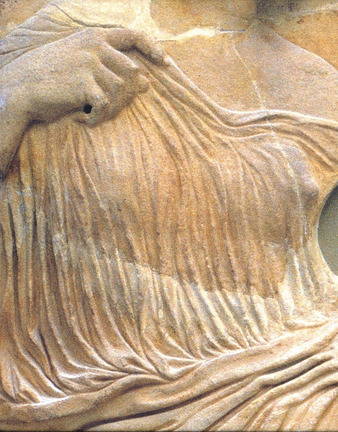 THE (OLD) ACROPOLIS MUSEUM (Vol. II, 1998)
THE (OLD) ACROPOLIS MUSEUM (Vol. II, 1998)
The first Acropolis Archaeological Museum was located on the sacred rock, next to the Parthenon. Despite its limited space, the museum housed for a long time the masterpieces of ancient Greek sculpture from the Archaic and Classical periods that not only marked the pulse of life in the city of Athens but also the spirit of its former inhabitants. Democracy, justice and reason were invented in Athens and defined the ideal type of man. The Parthenon freeze, a large collection of Kouros and Kore statues, the original Caryatides statues from the Erectheon and all other famous exhibits are now housed in the new Acropolis Museum, an impressive, state-of-the-art museum, considered as one of the best in the world.
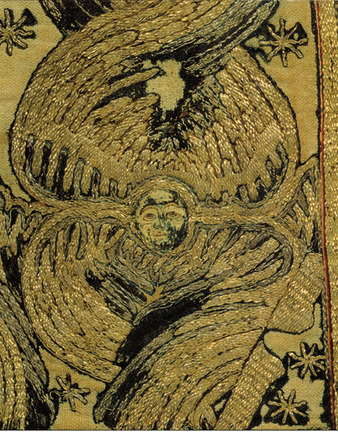 GREECE AT THE BENAKI MUSEUM (Vol. I, 1997)
GREECE AT THE BENAKI MUSEUM (Vol. I, 1997)
The first volume of Latsis’ ‘Museums Cycle’ collection was dedicated to the Benaki Museum, one of the first in Greece, operated as private foundation. Its complex structure, large display areas that cover a wide range of artistic expressions and respond different socio-cultural needs make it perhaps a unique example among all museum institutions of Greece.
TAGS: ARCHEOLOGY | ARTS | HERITAGE

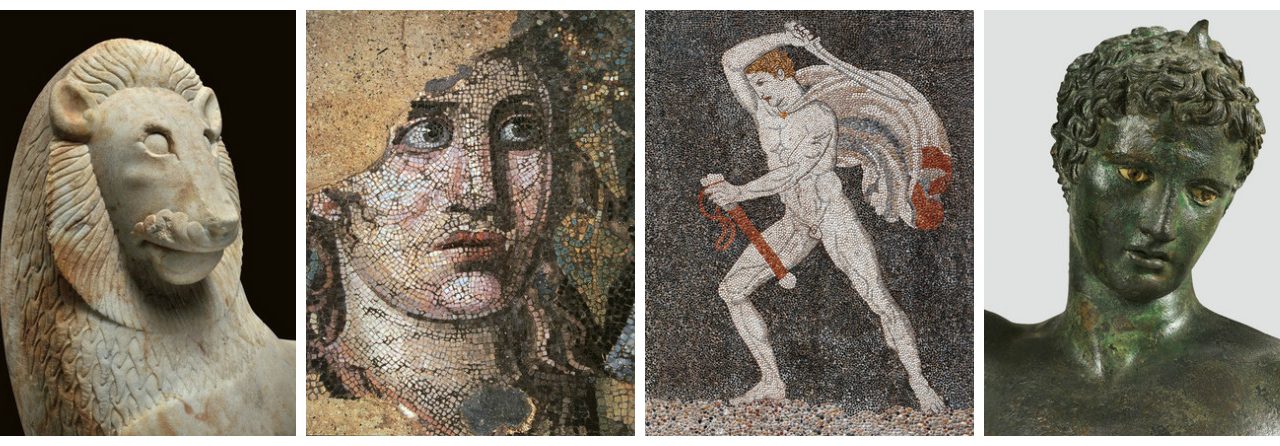
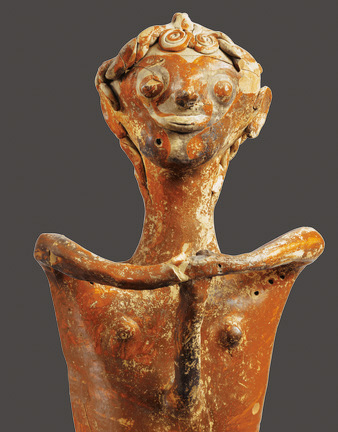 MYCENAE (Vol. XVII, 2015)
MYCENAE (Vol. XVII, 2015)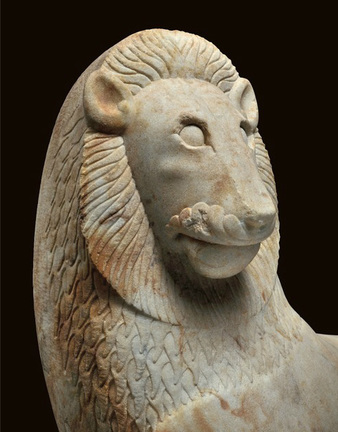 KERAMEIKOS (Vol. XVI, 2014)
KERAMEIKOS (Vol. XVI, 2014)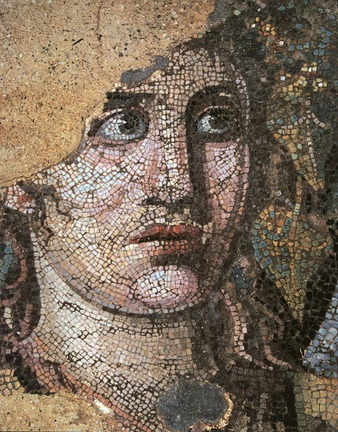 DELOS (Vol. V, 2003)
DELOS (Vol. V, 2003)

